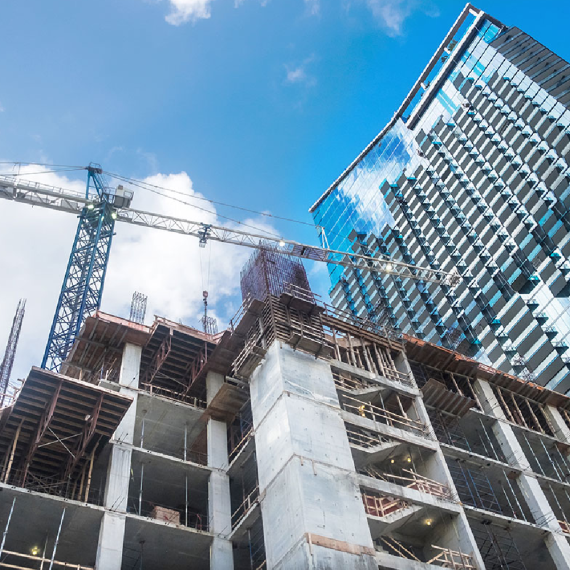Structural Design Services
SKYNXT Structural Engineering division provides complete Structural Design and Detailing services of buildings.Expert Team of well experienced Structural Engineers, BIM modelers and Draftsmen with industry/domain knowledge and qualification, Provide the main strength in the design & detailing of RCC, Precast, cast in situ & steel structures.
Design Software proficiency: Etabs, Safe, SAP2000, Staad Pro, Concise beam, CSI Col BIM & Detailing Software expertise: Tekla, Revit, AutoCAD, CADS RC
Design codes: IS, ACI, UBC, BS, Euro, NZS, SBC, EN
As part of structural design services, we provide our customers following structural engineering services for building & Industrial projects which ensure cost efficiency of the building & industrial Facility:
- Concept structural design
- Feasibility study
- Cost comparison of various structural systems
- Detailed structural design & detailing.
- Projects vetting
- Value engineering
The team has taken up many challenging projects domestic & international in the past which require following special knowledge and skills:
- Pre-stressed precast elements design
- Precast elements joint/connection design
- Rigid/semi- rigid diaphragm design
- Flat slab design.
- Checking of the precast building for progressive collapse
- Temperature analysis
- Construction stage analysis (Column shortening effect)
- Floor vibration analysis
- Transfer floor/beam design
- Base isolation
- Performance based design
- Structural steel design & it’s connections.
- Welded/Bolted connection design.
- Highrise building design.
Building Information Modeling (BIM)
Construction Drawings and Specifications:
A structural engineer plays a crucial role in the design process by analyzing the forces and loads acting on a structure, selecting appropriate materials, and designing the structural elements to ensure the safety, stability, and functionality of the building or infrastructure.
Several factors are considered during structural design, including the type of structure, anticipated loads (such as dead loads, live loads, wind loads, seismic loads), site conditions, applicable building codes and standards, and the desired performance and durability of the structure.
Structural engineers use a variety of software and tools for design, analysis, and documentation. Common software includes computer-aided design (CAD) tools, structural analysis software (such as SAP2000, ETABS, or STAAD.Pro), and building information modeling (BIM) software (such as Autodesk Revit or Tekla Structures).
Building codes are essential in structural design as they provide minimum requirements for the design, construction, and safety of buildings and structures. They establish standards for structural performance, load capacities, materials, and other factors to ensure the protection of occupants and public safety.

Services We Offer
SkynxTech offers professional structural design services for safe and durable structures.

